First of all, apologies for the following, rather rambling, 'thinking out loud'...
I have quite a few diecast models (mainly Altaya) that I have accumulated for my Finnish project. I've picked them up a bit at a time as I saw bargains on eBay, but I never really intended to include so many in what is, primarily, intended to be a 1/72 plastic kit based project.
The problem is modifying them, as I discovered with my current T-50 project. Although cutting parts off diecast metal models is possible - thanks to my trusty Dremel tool - the result is perhaps not ideal and may not, in the end, be desirable...
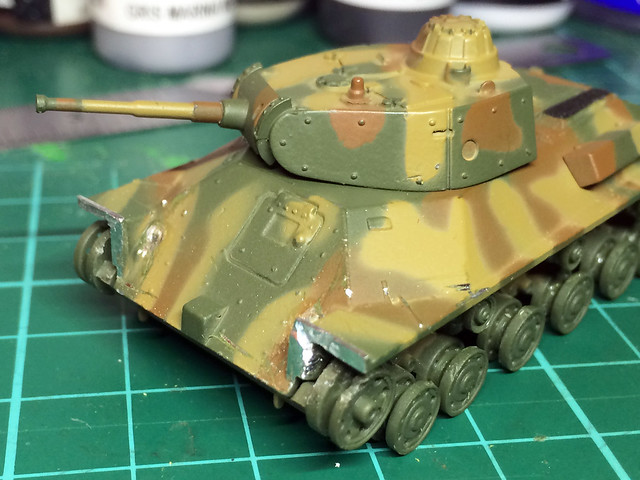 |
| The problem with metal models is they were never designed to be mucked about with in the way I am doing. The thickness of the construction does not lend itself to structural conversions. |
The above photo shows the result of some of my diecast surgery. This was a pretty simple modification, but some of my other vehicles - like the Bussing-NAG truck I have - will require even more intricate work. As diecast models were never intended for this kind of modelling you have to ask, is all the work worth the effort?
Of course, that is a personal preference. But for wargaming the answer may be a simple 'not really'. My trouble is that my project, although based on the premise of being a wargaming collection, is really a hybrid of wargaming and display level models. It's a bit of a messy concept really, but - simply put - if I just wanted a 'marker' to represent a type of vehicle for a game it's perhaps not so critical that that 'marker' is exactly accurate or historically detailed.
So, to modify diecast or not?
To be sure, I have made a rod for my own back. Because I have started trying my best to create fairly accurate vehicles, in the spirit of the original historic ones, suddenly saying 'meh, I'll just make do' is a very hard thing to do. But, on the other hand, I cannot ignore the fact that diecast vehicles are not suited to my style of 'Frankenstein' conversion (which I have been happily carrying out on my resin models).
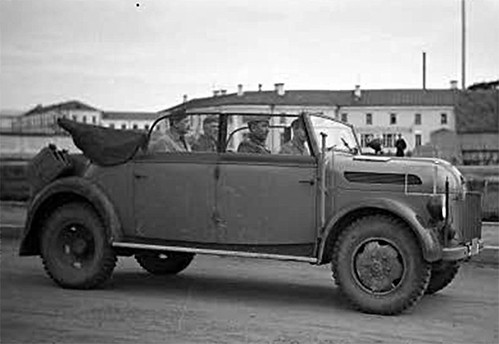 |
| The staff car version of the Steyr 1500. I hope to make this vehicle by using the bonnet of my diecast Steyr and joining it to the back of a Kfz.21 kit. |
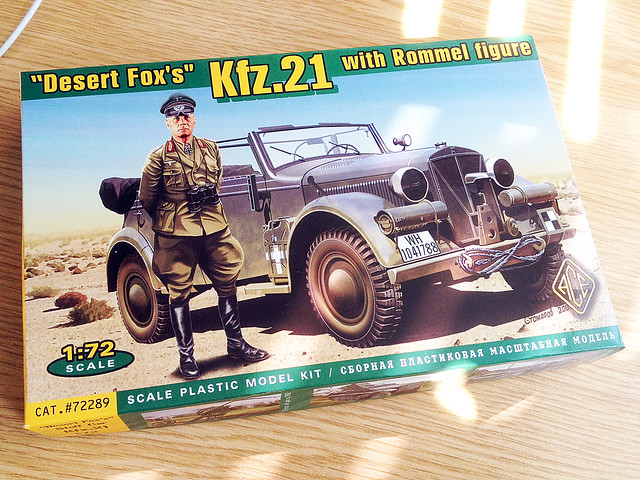 |
| The Kfz. 21 has exactly the same crew compartment (rear) as does the Steyr staff car. Technically, a 'simple' meld of two models? |
As you can see from my T-50, to try and convert diecast models can be to open up a whole can of worms, and in the end, may be more trouble than it's worth for wargaming (for sure). And even for display modelling, one could say that were I wanting to do the job right it would be better to spend the extra money to get one of those expensive short-run resin kits or even to scratch-build if accuracy is the main priority.
The worst of both worlds?
In modifying diecast models, I may very well be setting myself up to fail. Because my premise was to buy the diecast models because they were a cheap and easy solution but then to spend twice the amount of time it would take me to build a plastic kit version of the same model but end up with a model that may not be quite as good, I have to ask myself 'am I mad'?
In modifying diecast models, I may very well be setting myself up to fail. Because my premise was to buy the diecast models because they were a cheap and easy solution but then to spend twice the amount of time it would take me to build a plastic kit version of the same model but end up with a model that may not be quite as good, I have to ask myself 'am I mad'?
I do get a lot of enjoyment out of my conversion projects, it isn't just about trying to make something better than something that is available on the market in kit form. Look at my Chevy Van project, for example - that isn't as nice looking as a good quality plastic kit, but I have really enjoyed it and, in the end, have produced something unique. But, then, resin is easy to work with.
Conclusion
It irks me, but I simply think my diecasts should be used for what they are best at - quick 'fillers' with which to populate the large number of units I need for my 'army'. In essence, this is what I have done with my plastic T-26 models - I have bought two lovely, highly detailed, examples of T-26s by Mirage as exemplars for the type, but then filled out the rest of the units I need with cheaper Pegasus T-26s.
It irks me, but I simply think my diecasts should be used for what they are best at - quick 'fillers' with which to populate the large number of units I need for my 'army'. In essence, this is what I have done with my plastic T-26 models - I have bought two lovely, highly detailed, examples of T-26s by Mirage as exemplars for the type, but then filled out the rest of the units I need with cheaper Pegasus T-26s.
In the case of my diecast tanks, these are for my second Heavy Tank company, the first of which will consist of more accurate plastic models.
To be honest, had I realised what a quandary these diecasts would cause me I would have avoided them completely. The only exception being where the model I want is only available in diecast form (like my T-28 tanks, which are simply not available in plastic kit in 1/72).
I think I will just paint my diecasts, complete accuracy be damned!
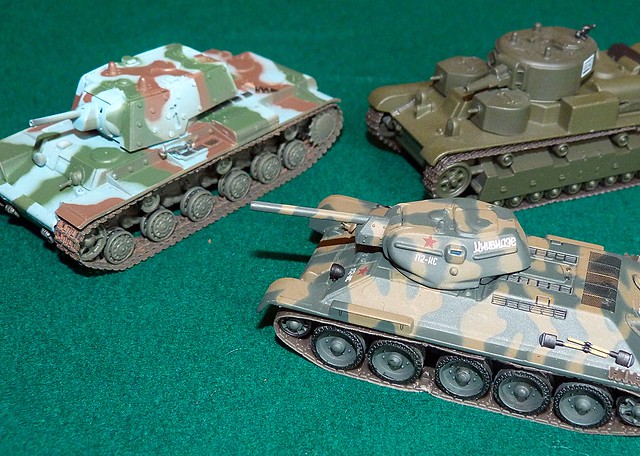

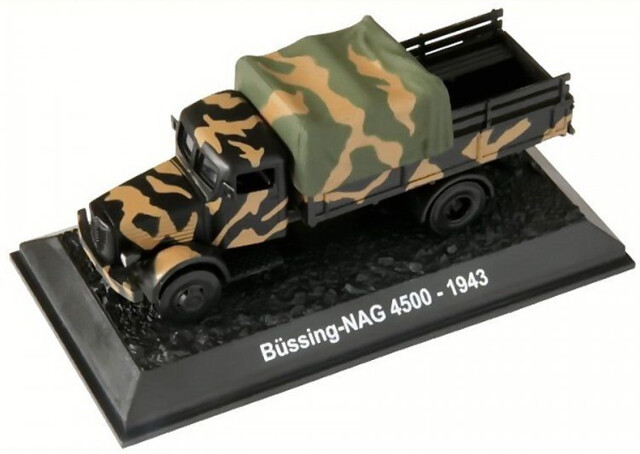
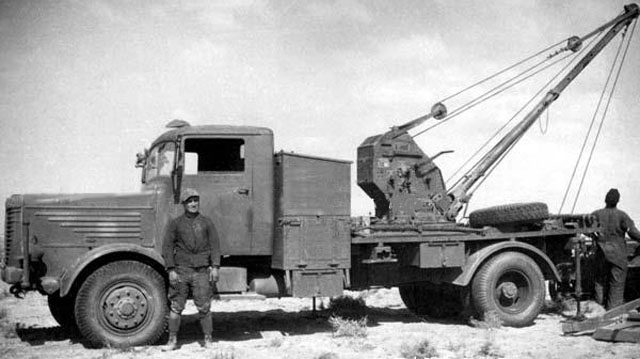
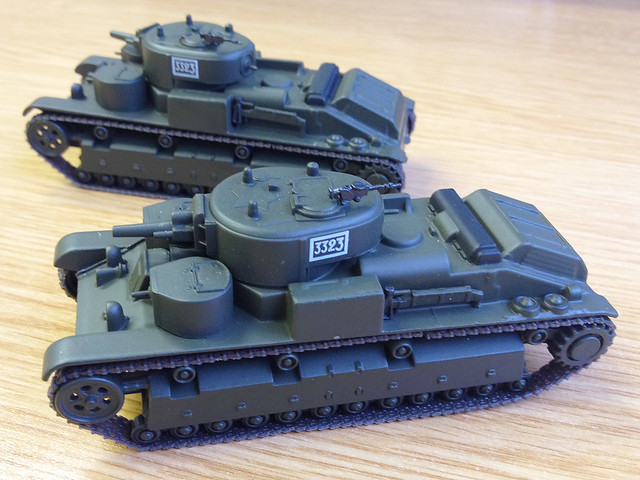
No comments:
Post a Comment